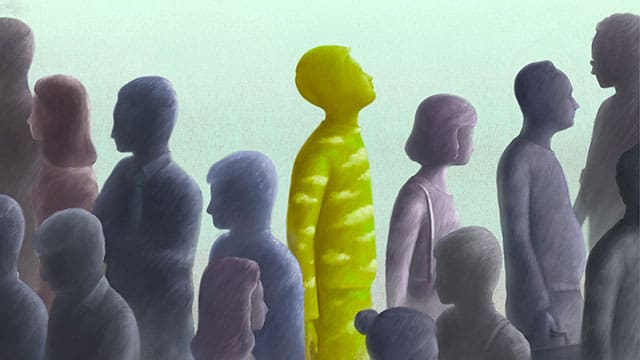Ninety-eight per cent of job postings at Canada’s top universities now require DEI compliance

For interview requests, click here
Since the first European university was founded in Bologna, Italy, in 1088, the goal of higher education was supposed to be a search for truth. But too many modern ivory towers in the West, including in Canada in recent decades, have been drawn into trendy anti-reality policies, activism and illiberalism.
A key example is the rise of so-called diversity, equity and inclusion (DEI) policies and bureaucracies at universities. Some institutions now select students and professors based on race, ethnicity or gender on the assumption that doing so will somehow make up for discrimination 100 years ago. Others attribute differing economic outcomes between groups almost entirely to systemic racism, ignoring other contributing factors.
Both assumptions are flawed, but they explain why DEI offices have sprung up like toxic weeds over the last 10 years across Canadian and American campuses.
These policies rest on the mistaken premise that group disparities can only be explained by discrimination. In reality, income and wealth in a liberal democracy such as Canada or the United States result from multiple factors: education levels, family dynamics, geography (people in rural areas, including reserves, earn less than those in major cities), the length of time an immigrant has lived in the country, and a variety of other influences.
 Canada’s universities are prioritizing DEI over excellence. |
| Recommended |
| Costco’s board chooses ideology over evidence
|
| The waning power of wokeism
|
| Mockumentary ‘Am I Racist?’ exposes the dark side of DEI
|
When these factors are accounted for, more similarities than differences emerge between groups.
For example, there is an average income gap between Indigenous and non-Indigenous Canadians, but that is partly due to differences in education levels and geography. A greater proportion of Indigenous Canadians live in rural areas or on reserves, where employment opportunities and wages tend to be lower. When these factors are considered, the gap largely disappears. In 2020, Indigenous Canadians with a bachelor’s degree had a median income of $76,000, while non-Indigenous Canadians earned $77,500. Among those with graduate degrees, the trend reversed—Indigenous Canadians earned a median income of $85,000, slightly more than the $83,000 median for non-Indigenous Canadians.
The same holds true for women. The four highest-earning female groups in Canada, based on ancestry, are Korean, Chinese, South Asian and Filipino—reflecting their education levels and hours worked.
Yet despite these economic realities, DEI policies continue to promote a simplistic racism-explains-all ideology. This mindset has now deeply embedded itself in university hiring practices, where race-based selection criteria have become widespread.
A new Aristotle Foundation index analyzed 489 academic job advertisements at Canada’s 10 largest universities, examining their use of DEI criteria in hiring. Of those, 477 postings—98 per cent—used some form of DEI requirement or strategy to fill academic vacancies.
The data was categorized based on how DEI principles were applied, ranging from generic statements to explicit hiring preferences based on race, ethnicity or gender. This analysis allowed for the creation of a University Discrimination Index, offering a clearer picture of how deeply DEI influences hiring decisions.
The findings are striking. Every University of Toronto employment posting and 96 per cent of Dalhousie University’s job listings mentioned or implied that a candidate’s “contribution to DEI” was an asset. McGill University and the University of Saskatchewan required all applicants to complete a DEI survey. Nearly two-thirds of postings at the University of British Columbia and 55 per cent at the University of Manitoba required candidates to submit a DEI statement or essay.
Some might argue that requiring DEI statements does not necessarily mean a university will discriminate in hiring. But that is unlikely, given the vast amount of time, money and advocacy DEI proponents dedicate to promoting race-, ethnic- and gender-based hiring quotas.
Beyond the implicit message of who is likely to be hired, some universities are explicit. The University of New Brunswick barred white males from applying for a research chair position in “quantum sensors for space” in its physics department. At UBC, nearly one in five academic job postings explicitly restricted applications to individuals from a particular race, ethnicity or other immutable trait.
Even without addressing the lack of viewpoint diversity at Canada’s universities, the core problem with diversity, equity and inclusion policies is not the desire for a diverse workforce—diversity is beneficial because talent exists in all groups.
The problem with racial, ethnic and gender hiring quotas is threefold. First, they treat individuals based on group identity rather than individual merit. Second, they assume that identity largely explains success or failure. And third, they undermine merit as a hiring principle.
The result is an anti-individual, anti-meritocratic and illiberal hiring approach at many of Canada’s largest universities.
Mark Milke is the president of the Aristotle Foundation for Public Policy, which recently released DEI and academic hiring in public universities: An index of university discrimination in Canada.
Explore more on Wokeism, Discrimination, Racism, Coercive progressivism
The views, opinions, and positions expressed by our columnists and contributors are solely their own and do not necessarily reflect those of our publication.
Troy Media is dedicated to empowering Canadian community news outlets by providing independent, insightful analysis and commentary. Our mission is to support local media in fostering an informed and engaged public by delivering reliable content that strengthens community connections, enriches national conversations, and helps Canadians better understand one another.
